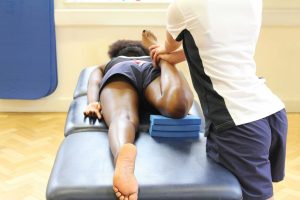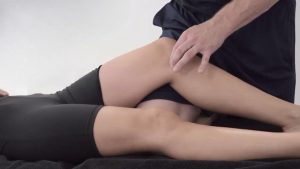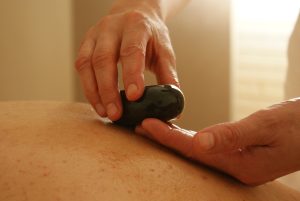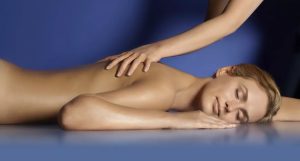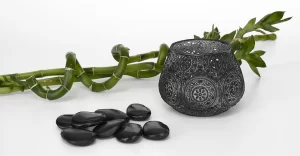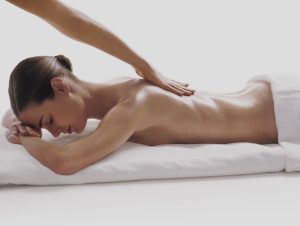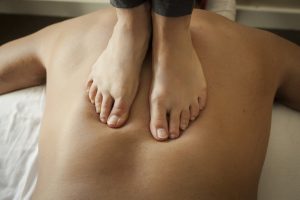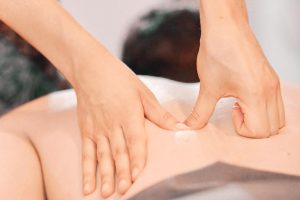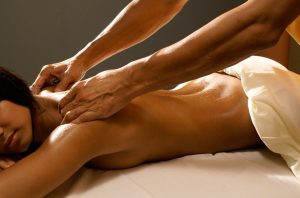Massage plays an important role in relieving muscle tension and is one of the most effective ways to release accumulated tension and stress in the muscles.
Decompression Massage


Decompression massage is a specialized massage practice performed using specialized techniques to release compression from specific areas of the body. It aims to reduce the load on joints and muscles, improve blood circulation, and increase joint mobility.
Key characteristics of decompression massage:
- Gentle and relaxing movements.
- Stretching and relaxation.
- Focus on specific areas such as the neck, back, lumbar region, shoulders, and hip joints.
- Application of light pressure to avoid additional discomfort and tissue damage.
- Improvement of blood circulation to deliver oxygen and nutrients to tissues and remove toxins.
- Relaxation and stress relief.
This practice is often used to alleviate back pain, reduce spinal load, improve joint mobility, and relieve muscle tension. It is a gentle and pleasant way to improve the body’s condition and enhance comfort and well-being. However, before undergoing decompression massage, it is recommended to consult an experienced massage therapist or medical specialist to assess your body’s condition and select the most suitable relaxation techniques and methods.
Deep Tissue Massage
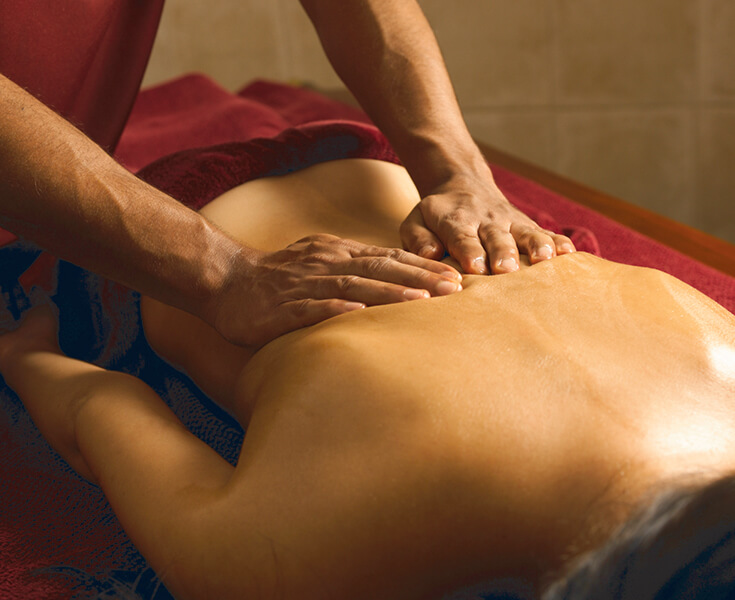

Deep tissue massage is an intensive massage practice that targets the deep layers of muscles and tissues in the body. It is performed using strong pressure and specialized techniques to relax and release accumulated tension in the deep muscles.
Key characteristics of deep tissue massage:
- Deep pressure to soften adhesions, spasms, and tightness in the muscles.
- Targeted work on problem areas.
- Stretching techniques: manual methods to soften muscles, improve flexibility, and joint mobility.
- Specific movements and strokes, such as kneading, friction, stretching, and other techniques, to reach deep tissue layers.
- Release of muscle spasms.
Comparison of Decompression Massage and Deep Tissue Massage:


Technique:
- Decompression massage involves soft and gentle movements focused on relaxation.
- Deep tissue massage involves intense and deep movements targeting the deep layers of muscles and connective tissues.
Focus:
- Decompression massage primarily targets compression and accumulated tension in specific areas of the body.
- Deep tissue massage is aimed at resolving chronic muscle spasms and issues related to deep muscles.
Intensity:
- Decompression massage is usually performed with light to moderate pressure, making it pleasant and relaxing.
- Deep tissue massage requires more intense pressure, which may cause discomfort, especially for unprepared or sensitive clients.
Areas of Application:
- Decompression massage is often used to alleviate back pain, reduce tension in the neck, shoulders, back, and hip joints, and provide stress relief.
- Deep tissue massage is applied to work with deep muscles, especially for people with chronic pain and limited mobility.
Effectiveness:
- Decompression massage eases muscle tension, improves blood circulation, and promotes overall relaxation.
- Deep tissue massage helps resolve deep spasms, increase flexibility, and muscle mobility.
Complexity and Safety:
- Decompression massage is relatively safe and can be applied to almost all patients.
- Deep tissue massage requires more expertise from the massage therapist, as improper application of intense pressure may cause tissue damage or discomfort.
When choosing between these two relaxation methods, individual needs and characteristics of each client should be considered. It is recommended to discuss your expectations and condition with a massage specialist to select the most suitable method for achieving desired results.
Questions and Answers:
What is massage therapy?
Massage therapy is the manipulation of soft tissues in the body to improve blood flow, relieve muscle tension, and promote relaxation. It involves applying pressure and various techniques such as deep tissue massage, Swedish massage, and Cupping therapy to address specific issues or provide overall relaxation.
How does decompression therapy work?
Decompression therapy is a non-invasive treatment that helps relieve pain and discomfort by creating negative pressure to promote healing in the affected area. It is commonly used for spinal decompression to alleviate back pain and pressure on nerves. The therapy involves stretching the spine and relieving pressure on the discs and joints.
What are the benefits of deep tissue massage?
Deep tissue massage is a technique that focuses on reaching the deeper layers of muscles and connective tissue. It helps to release chronic muscle tension, improve circulation, and break up adhesions. Deep tissue massage can provide pain relief, reduce muscle discomfort, and promote overall relaxation.
How does cupping therapy work?
Cupping therapy is a traditional healing technique that involves placing cups on the skin to create negative pressure. This suction effect helps to improve blood flow, loosen muscles, and promote lymphatic flow. Cupping therapy can be used to treat pain, reduce muscle soreness, and promote relaxation.
How can massage therapy help with chronic pain?
Massage therapy can be an effective treatment for chronic pain. It helps to release muscle tension, improve blood flow, and promote the body’s natural pain-relieving mechanisms. Through various massage techniques, such as deep tissue massage and Swedish massage, massage therapists can target specific areas of pain and provide relief.
What is the role of a massage therapist?
A massage therapist is a trained professional who specializes in providing massage therapy treatments. They are knowledgeable about different massage techniques and can assess the needs of each individual client. Massage therapists use their hands, fingers, and elbows to apply pressure and manipulate soft tissues to provide pain relief, relaxation, and overall wellness.
Can massage therapy help improve circulation?
Yes, massage therapy can improve circulation. Massage techniques, such as the signature glide technique, help stimulate blood flow and enhance the delivery of oxygen and nutrients to the body’s tissues. This improved circulation can aid in healing, relieve muscle tension, and promote overall well-being.
Which type of massage is suitable for relieving back pain?
Both methods can help alleviate back pain. The first technique is suitable if the pain is related to accumulated tension and compression in the muscles. The second one is recommended if the cause of the pain is deep muscle spasms.
Which type of massage is preferred for athletes?
Deep tissue massage is often preferred by athletes as it helps work with deep muscles, resolves spasms, and increases flexibility. However, decompression techniques can also be beneficial for relieving strain after intense workouts and improving recovery.
Which problem areas are best suited for decompression massage, and which ones are suitable for deep tissue massage?
Decompression massage is effective for problem areas associated with compression and tension, such as the neck, back, lumbar region, shoulders, and hip joints. Deep tissue massage is recommended for working with deep muscles and issues that may cause chronic muscle spasms.













![11 Best Alternatives to Bedpage: Your Ultimate Guide [March 2024]](https://massage.dating/wp-content/uploads/2024/03/Best-Alternatives-to-Bedpage-300x200.jpg)















